

USCG CABLE SHIP PEQUOT - UNITED STATES
HARBOR DEFENCES
These pages continue the story of the U.S. Coast Guard
Cable ship Pequot during World War II as a harbor defense cable-laying
and repair ship under direction of the US Navy. She was responsible for the installation of anti-submarine
indicator loop cables, and while laying and servicing standard communications cables, the
Pequot moved very slowly or was stationary. Primarily based out of Boston or New York, a variety of escort vessels were assigned to protect
Pequot during these operations throughout the war.
This is a story about one such escort ship - Subchaser 1296 - and the
people who served aboard her. For more information on WWII Subchasers see our Pequot Escort Page.
Life Aboard Subchaser 1296 and the
Gene Chapoton Story
 |
|
Details of the WWII
Subchaser (Click To Enlarge) |
|
|
The following photos and information courtesy Marilyn Chapoton |
 |
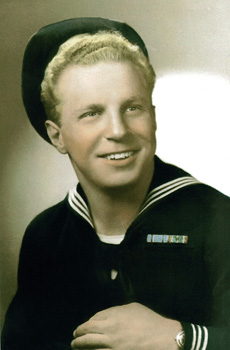 |
|
The 1296 on a hot summer’s day. Gene Chapoton is one of the sailors up on the flying bridge. |
Gene Chapoton US Navy during WWII |
Born in 1917 Gene Chapoton, grew up mostly around Detroit, Michigan where he was award the Best Soldier medal out of his 300 member high school ROTC class. Before the war he was a competitive boxer with the Catholic Youth Organization and even fought in Cuba. He spent the first part of World War II working at the Ex-Cell-O Corporation which had developed a unique worm gear drive which greatly improved the efficiency of Navy guns. Despite his Selective Service deferment due to industrial war work, Gene wanted to serve his country. Ex-Cello-O reluctantly released him and he joined the Navy on October 27th 1942.
After basic training at the Great Lakes Naval Training Station in Illinois he attended Naval Hospital Corps School and received his rating as a Pharmacist Mate. Early in his Navy career he served on ships stationed around Scotland and Wales. Then during 1944 and 1945 he shipped aboard Subchaser 1296 out of its home port of the Eastern Frontier Base at Staten Island New York. Gene’s wife Marilyn writes, “Gene traveled on convoy duty from New York down to the Panama Canal and also up to Murmansk, Russia.” According to Gene’s stories after the war, SC 1296 was involved in action that resulted in the sinking of German U-boat about 300 miles from New York, and like the Pequot, rode out the Great North Atlantic Hurricane of 1944 off Cape Hatteras. We also know that Gene was aboard the 1296 when it served as the Pequot’s escort during April of 1945. Gene was discharged after VJ Day on November 3rd 1945 as a Pharmacist Mate 1st Class. In addition to being awarded a Good Conduct Medal, the American Campaign Medal, the European-African-Middle Eastern Campaign Medal, and the World War 11 Victory Medal, Gene received a personal letter of commendation from Secretary of the Navy James Forrestal which hung proudly in his home the rest of his life.
 |
|
Gene's model of Subchaser 1296 |
After the war Gene built a model of Subchaser 1296 and loved to tell stories of his time aboard ship, including the time his Captain went to bat for him after he got in trouble on shore leave when he knocked out Gus Lesnavich who was the World's Light Heavy Weight title holder! Gene went back to work at Ex-Cell-O Corporation after his war service, where he worked until his retirement, in personnel, purchasing, labor relations, the machine tool division, and on the company’s famous Pure Pak milk carton. His wife Marilyn writes that, “Gene had a great sense of humor, could tell a good joke, make people laugh, and imitate dialects. He loved Latin music and was a great dancer - especially Latin dances. He loved to visit Mexico, Spain and Arizona. He loved to travel and could pack a "mean" suitcase to travel light. He also loved history, archaeology, reading, and politics.” Gene Chapoton passed away on August 1st 1997.
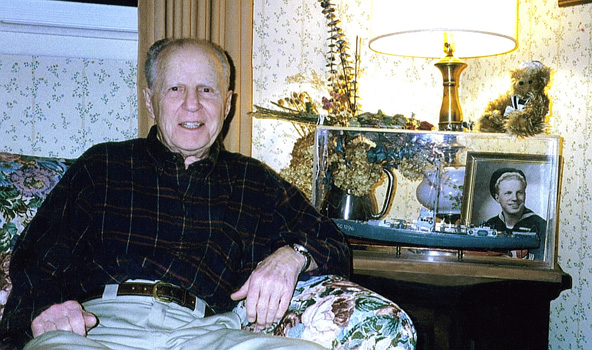 |
|
Gene in 1996 with his model of Subchaser 1296 and earlier photo of himself in uniform |
|
|
Marilyn has provided us with many of Gene’s photos for a glimpse at life aboard Subchaser 1296. |
 |
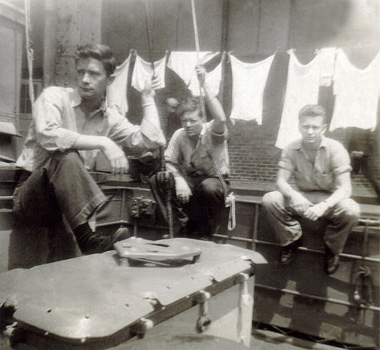 |
| Gene, on the right, enjoys a summer day aboard the 1296 with his crewmate James Donlon from Milford, MA | Three of the crew passing time on laundry day at Pier 6 Staten Island, New York 1944 |
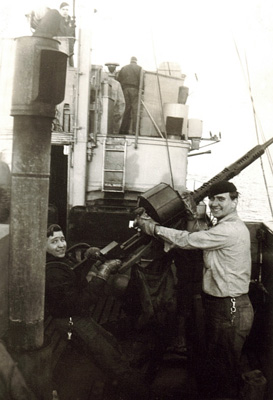 |
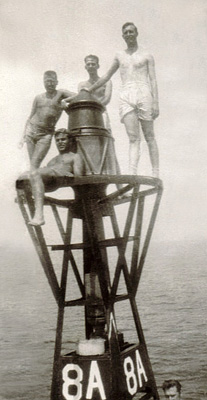 |
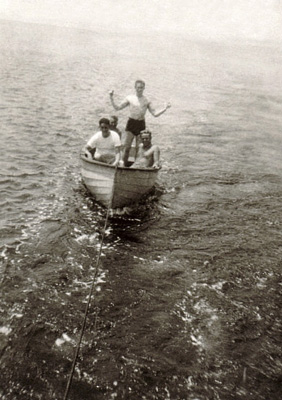 |
| SC 1296’s Gunner’s Mate and Boatswain’s Mate at the starboard 20mm position | The Captain and some sailors take a swimming break on a Long Island Sound buoy during the summer of 1944. | Some well earned R & R. The launch with some sailors swimming being towed behind the 1296. |
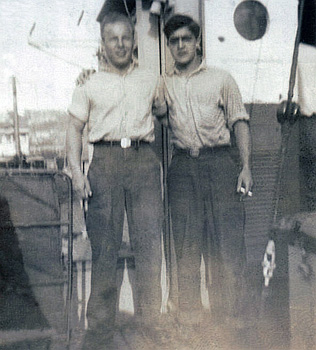 |
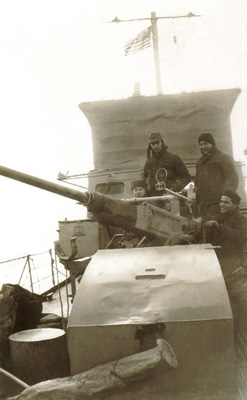 |
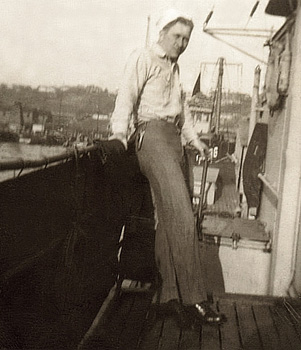 |
| Gene on the left with sailor Vito Cassato. | Crew in position on the forward 40mm Bofors deck gun during cold North Atlantic convoy escort duty. | The Boatswain of Subchaser 1296 in port. |
 |
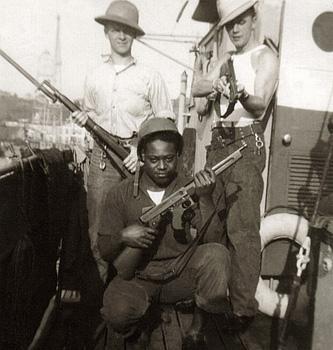 |
| One of the crewman clowning around for the camera. | Here we see the different vintage of weapons aboard SC 1296. Steward’s Mate Vance from North Carolina is in the foreground. |
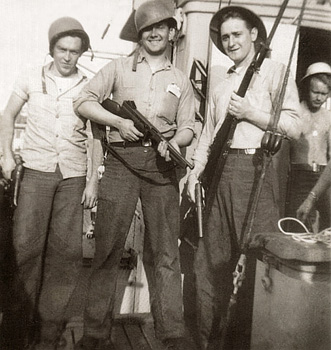 |
|
| Crewmen break out the small arms for this photo. | Much of the SC 1296 crew. Gene Chapoton is 2nd from the right in the 2nd row. |
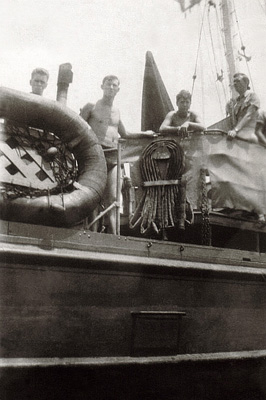 |
 |
| Here we see one of the 1296’s web-bottom life rafts, a fire hose stowed against the rail, and a tarp covering one of the 20mm Oerlikon’s in the background. | The 1296’s Executive Office in front of the pilot house after a dangerous encounter with sea spray icing which could sink a ship. |
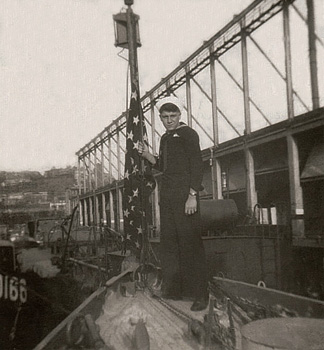 |
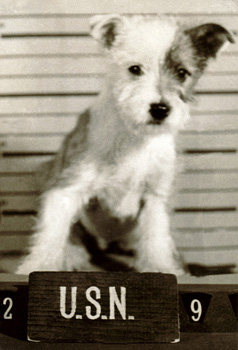 |
| Seaman Caviccio on the bow by the Union Jack when the 1296 was in port at Pier 6 Staten Island, NY 1944 |
This Terrier was the SC 1296’s Mascot in 1945 |
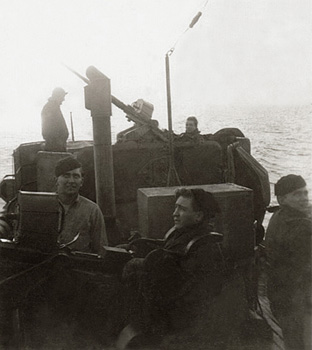 |
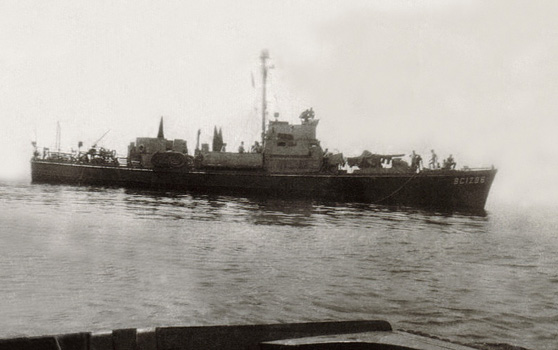 |
| The two amidship 20mm Oerlikon positions with a gunner and a loader standing by. | Finally, a view of Subchaser 1296 taken from the ship’s launch. |
Every effort has been made to trace and acknowledge copyright. The authors would welcome any information from people who believe their photos have been used without due credit. Some photos have been retouched to remove imperfections but otherwise they are true to the original.
FEEDBACK
If you have comments or queries specifically
about the Pequot, please contact
Chip Calamaio
chipaz@cox.net, Phoenix, Arizona,
USA. (H) 602-279-4505.
Click here to go to the Pequot Main Page.
Research and design: Chip Calamaio and Richard Walding